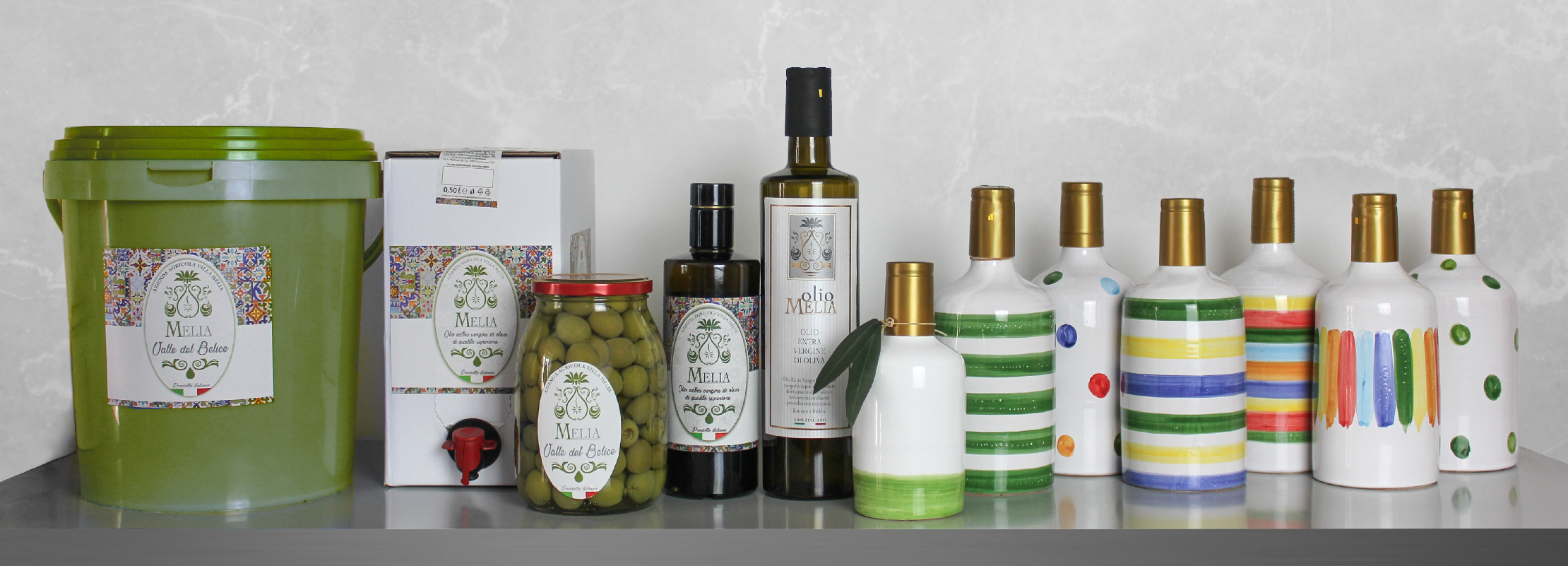Method of production
Harvesting is done by hand by “stripping”, generally between October and November. At this stage, the use of sagging substances, that is, substances that accelerate the ripening of the fruit, is prohibited. The transport takes place in mesh boxes or racks where the fruits are arranged in layers not exceeding 20 cm. The processing phases are started within and no later than 24 hours from the harvest. There are three different processing systems for green olives and two for black olives. Green olives undergo a transformation process either with the "Seville system" (immersion in sodium hydroxide, washing and lactic fermentation), or with the use of natural iridescent ("natural", only brine is used) or through the Castelvetranese method (immersion in sodium solution, addition of ground salt and washing). Deamarised olives using the first two methods can then be transformed into the types: Whole in Brine, Crushed, Pitted in Brine, Sliced, Incisa and Seasoned. Black olives, on the other hand, can be treated with or without an alkaline medium. For black olives treated without alkaline medium it is possible, through further processing, to give rise to the following types: in brine in natural, in brine with vinegar, dehydrated with dry salt or baked. If the processing is carried out with an alkaline medium, the use of the "Californian system" or the dry salt system is allowed.
Appearance and flavor
Nocellara del Belice PDO is characterized by its large size, each fruit weighs 5-7 g. It has a rounded shape and is green or black. The green type, when it reaches maturity, becomes a vinous red color. The pulp is firm and crunchy, with a slightly bitter taste.
History
Olive growing in the Belice Valley has a very long tradition, especially for table olives. This crop has in fact managed to establish itself almost spontaneously both for the suitable environmental characteristics and for the valuable commodity requirements of the only cultivar represented in such a preponderant way. The first documents describing the presence of olives in the territory of the Belice Valley date back to the times of the Greek colony of Selinunte, in the 7th century BC. Since the 19th century, the Nocellara del Belice variety has established itself as an olive that can be used both for table and for oil.
Gastronomy
Nocellara del Belice PDO can be kept in cool and dry places, away from sources of heat or direct light. It is consumed naturally as a tasty aperitif, it is also excellent paired with traditional local cheeses, meats and vegetables in oil. It can also be used as an ingredient to flavor typical Sicilian dishes, above all the famous "caponata".
Marketing
The product is marketed in the Nocellara del Belice PDO type. In particular, green olives are sold whole (with stone) in brine while pitted in brine, crushed, sliced, incised or seasoned with oil, garlic, chilli and oregano. Black olives, on the other hand, are currently marketed only in the natural brine type. It is generally packaged in glass or tinplate containers, in plastic bags such as heat-sealing film and in plastic or terracotta containers.
Distinctive note
The red or brown soils and the distinctly Mediterranean climate create micro-environmental conditions that affect the typical characteristics of Nocellara del Belice PDO, such as its size and particular taste.


